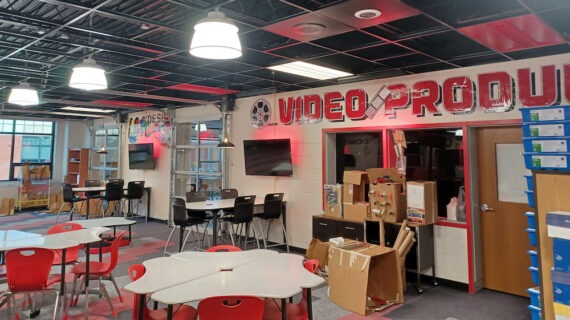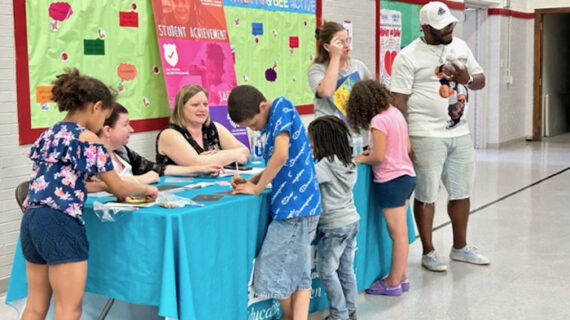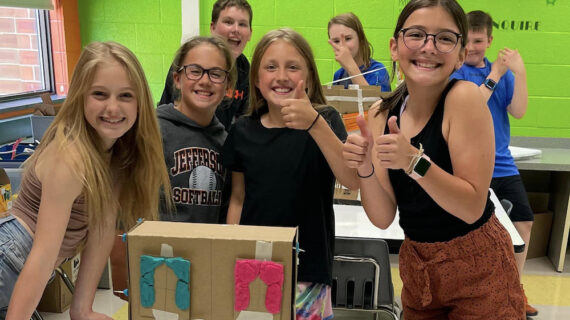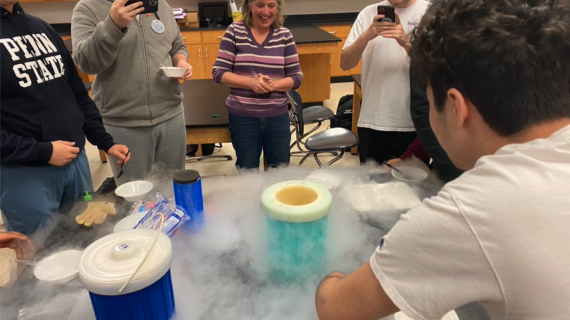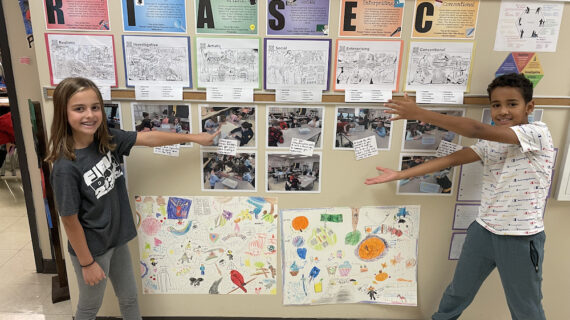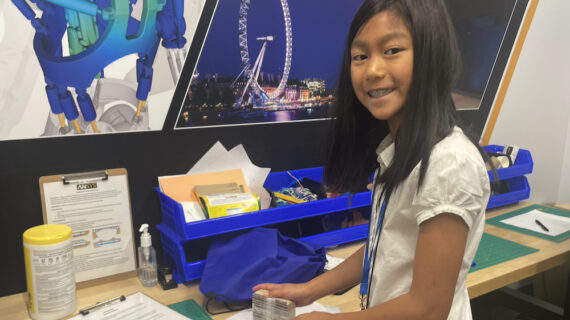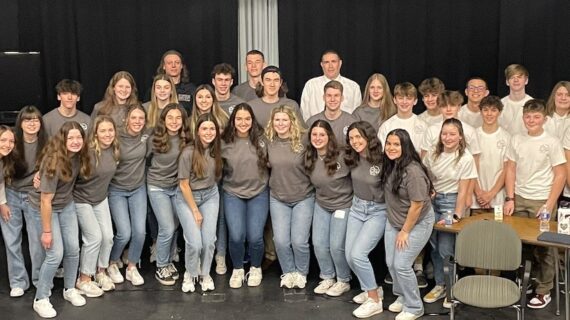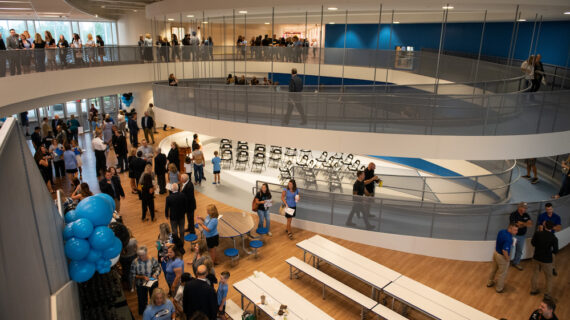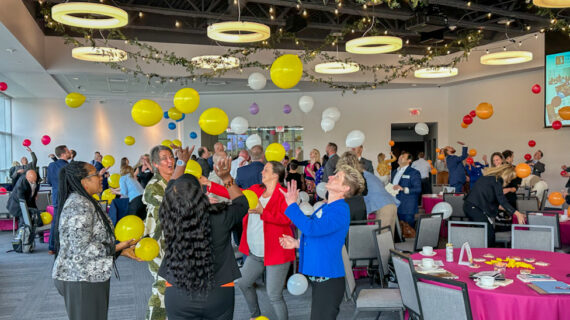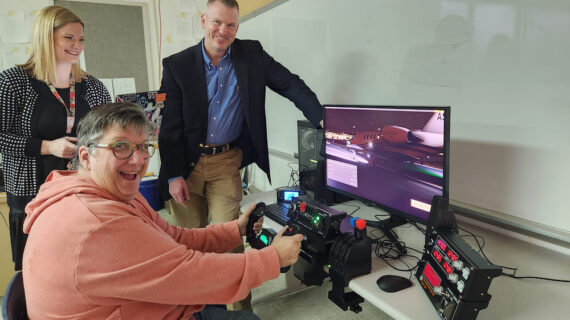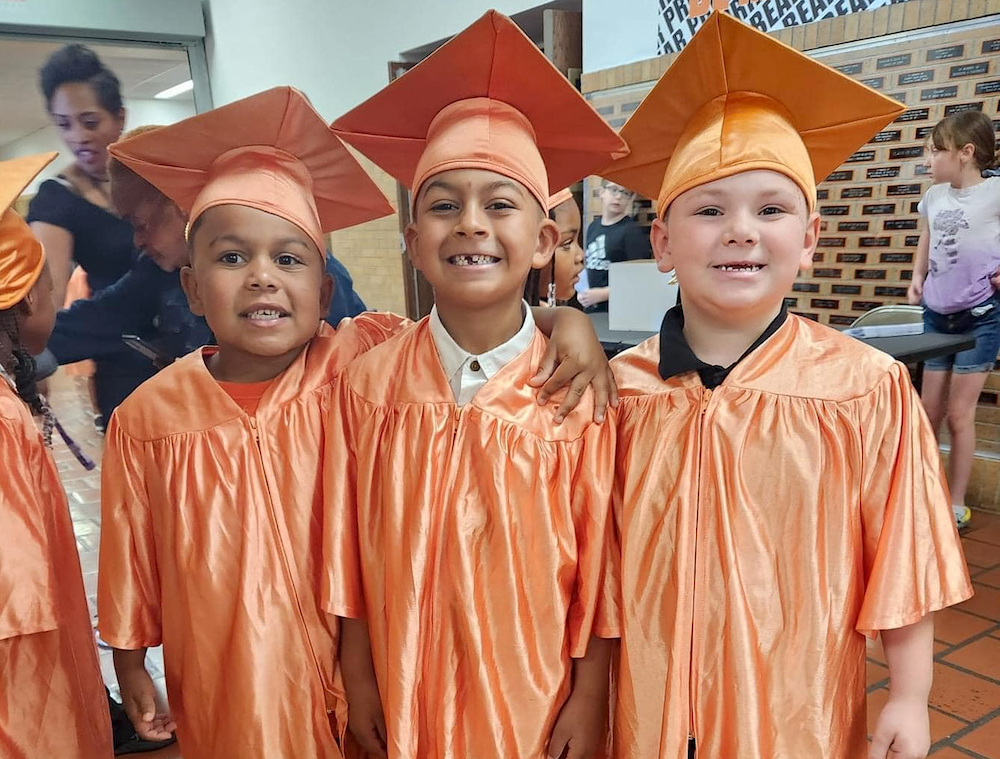
Building bridges to the future in the Clairton City School District
This story is one in a series created in collaboration with the AASA Learning 2025 Alliance to celebrate the work of groundbreaking school districts in the Pittsburgh region. Kidsburgh will share these stories throughout 2023.
Maria Suss’ student could have been written off. Quick to fight and slow to make friends, middle school had proven a difficult, lonely place for him. In any other district, he might have been labeled “bad” until he began to believe it himself.
But Suss knows there’s more to her kids than labels. “I’ve been part of the Clairton City School District for 22 years,” says the middle school principal. “I’m proud of that. I’m proud to know my students. And I’m proud to know their parents — because they were my students, too.”
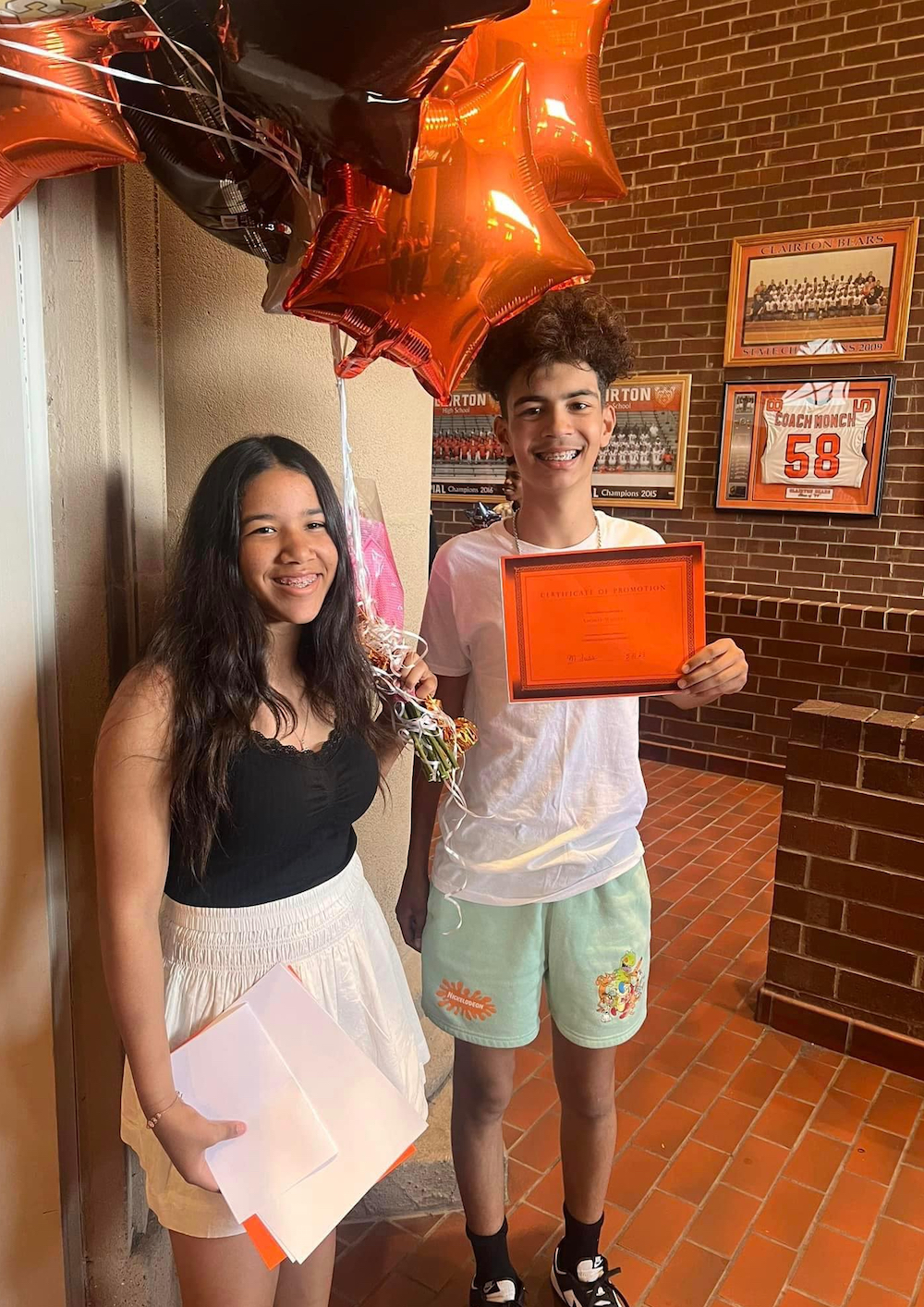
It’s a theme that runs through the district. John Wilkinson is Clairton City’s high school principal. “We can talk about Algebra I, but every district offers that,” he says. “What I’m really proud of are the personal relationships we build with our kids.”
Whether meeting with seniors every nine weeks, helping students craft personalized paths to commencement, or sending handwritten notes to parents, every relationship matters, says Wilkinson. “If you don’t feel safe — if you don’t feel loved — then how are you going to learn?”
Research suggests he’s right. Positive relationships with caring adults have been shown to boost everything from attendance to grades to graduation rates. Just as importantly, such relationships can help protect young people against the perils of toxic stress: the mental, physical, and academic challenges that can come with living in poverty.
It’s something the district knows well. Part of the Monongahela Valley — an area hit especially hard by the collapse of Pittsburgh’s steel industry — Clairton City is the fifth-poorest school district in the state of Pennsylvania. Reminders of that fact are everywhere, district officials say: in the cuts to public transit that have isolated the district; in the lack of a proper grocery store; and in the economic disparity between Clairton City and a neighboring district, ranked among the nation’s most extreme. (Comparing the two districts, says Wilkinson, “isn’t apples to apples. It’s not even fruit.”)
But Wilkinson and his colleagues are determined to offer the resources and opportunities that Clairton City deserves. That’s why they joined the Western Pennsylvania Learning 2025 Alliance, a regional cohort of school districts working together — and with peers across the country — to create student-centered, equity-focused, future-driven schools that prepare every learner for tomorrow.
Led by local superintendents and AASA, The School Superintendents Association, the Alliance convenes for workshops, networking opportunities, and professional development that helps districts like Clairton City do what they do best: build close, caring relationships that set kids up for success.
“It’s been an opportunity for us to pursue opportunities that we might not otherwise be able to access,” says Thomas McCloskey, Clairton City’s assistant superintendent. With financial support from The Grable Foundation and connections built through the Alliance, “We’ve been able to try new things and build some additional partnerships.”
Those partnerships are essential to meeting Clairton City’s needs, officials say. In recent years, the district has built an unparalleled range of them, working with foundations, healthcare providers, and universities to offer everything from a high-tech robotics curriculum to dental and vision care to a school-wide asthma management clinic.
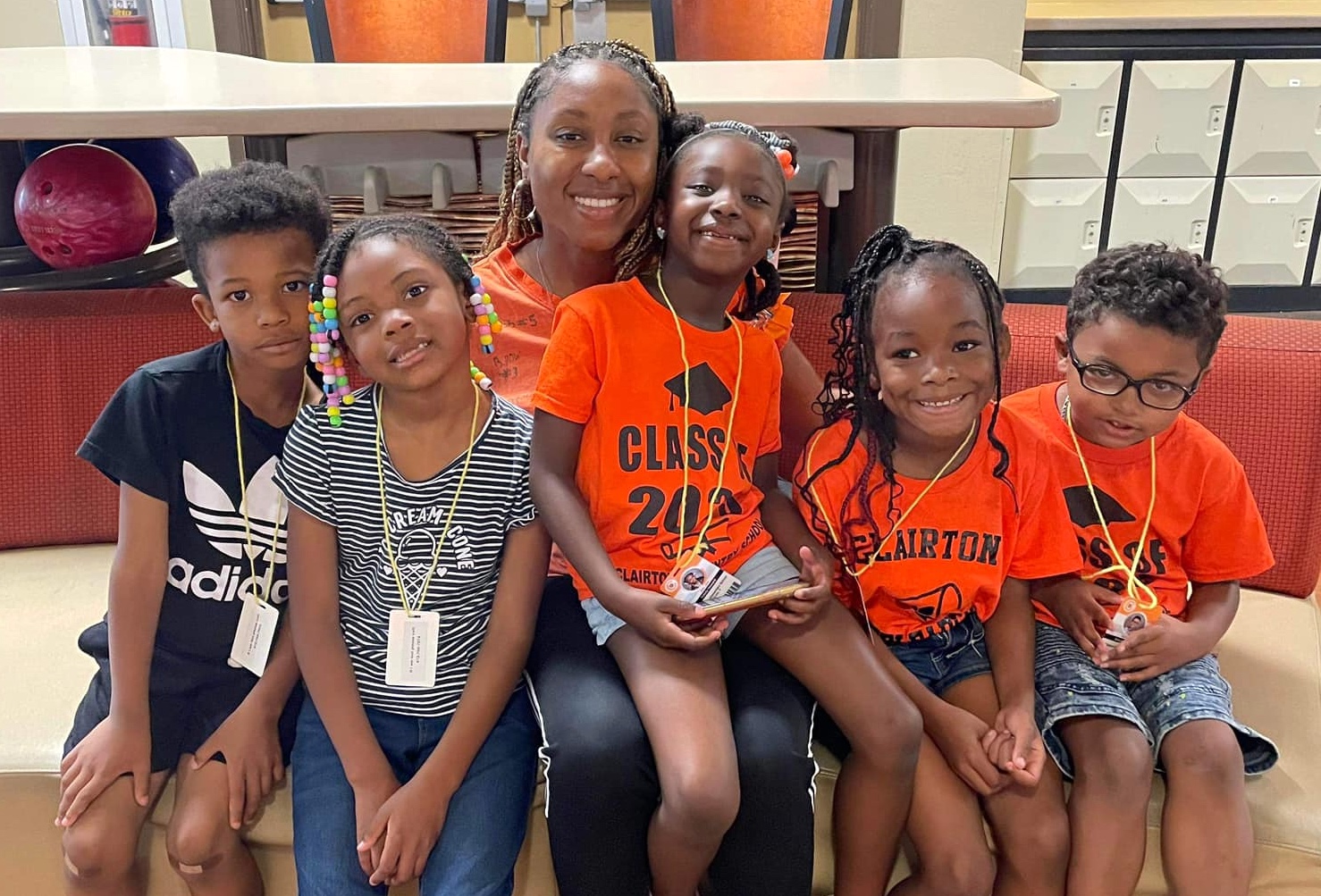
But among Clairton City’s many partnerships, the district’s mental health programs have perhaps been most transformative. Working with the Allegheny Health Network and Awaken Pittsburgh, Clairton City brought the Chill Project — a mindfulness-based therapy program — to each of the district’s schools.
“That’s been a game changer,” Wilkinson says. “We have full-time therapists now. Instead of having to take a bus somewhere, students can walk down the hall to get the support they need.”
The program has been so popular among students that the district now has a waiting list, and it continues to build additional tiers of support for kids of every age. “We have a mobile [therapy] van that comes several times a year, and all of our teachers have ‘calm corners,’ where students can go when they’re stressed,” says Deborah Maurizio, Clairton City’s elementary school principal. “It’s amazing to watch the breathing and mindfulness techniques become automatic for students. We don’t even have to prompt them — even our youngest learners know when to take a few minutes and do their deep breathing.”
It’s one more way the district helps students feel cared for and safe. That feeling, says Maria Suss, can change a student’s life.
After enrolling in therapy and sticking with his sessions, Suss’ student — the one who’d been aggressive and alone — began to branch out. He picked up a basketball for the first time, and he’s about to start on the track team. “He’s making friends,” says Suss. “He’s making healthy choices. He’s doing all these things we always knew he could do, because we believed in him all along.”
And now, she adds, “He also believes in himself.”
Want to download this story? Click here for a PDF.
